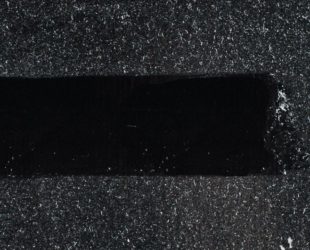Quiet washing machine – 52 dB (A) during washing
Bosch WAT28401UC
The Bosch WAT28401UC is a quiet washing machine for which you can actually find decibel levels. It’s 52 dB (A) during washing and 72 dB (A) during spinning. Among others this is achieved by anti-vibration circular side walls that reduce vibration. This washing machine is a freestanding front loader.
check price on Amazon
Back to comparison chart
Low noise washing machine
Bosch WAT28400UC
One quiet washing machine is the Bosch WAT28400UC. It is another freestanding front loader. Its washing noise level is 54 dB (A) and its spinning noise level is 73 dB (A).
check price on Amazon
Back to comparison chart
Quieter washing with LoDecibel™ Quiet Operation
various LG washing machines
Quiet a few LG washing machines feature LoDecibel™ Quiet Operation, which is designed to make a washing machine work quieter. You can find both top loaders and front loaders among these quiet washing machines. Thus, everybody should be able to find a machine that fits their needs.
Some examples are the front loader LG WM3997HWA, the top loader LG WT7600HWA, and the front loaders LG WM3488HW or WM3488HS (light and dark version).
Back to comparison chart
How to chose a quiet washing machine
Noise level
The noise level is an important purchase criterion in a washing machine, especially if you have to accommodate your washing machine inside your flat.
Sometimes, the manufacturer provides information on the noise level. This is given in decibels or dB (A). When deciding on a washing machine you should naturally pay attention to this useful piece of information and put some effort into finding it. A decibel noise rating makes it also possible to compare different washing machines.
High noise levels occur particularly during spinning. Fortunately, this only lasts for a limited period of time. The noise during the washing cycle spans a far longer time frame.
Ideally you should find a washing machine that has a low noise level in both washing phases, i.e. one that is silent during washing and during spinning. Commonly, you may have difficulty finding such a washing machine or it may simply exceed your budget. In that case you should make up your mind as to what is more important to you: a lower noise peak level (spinning) or a quieter continuous background noise (washing). If the continuous noise during washing is more annoying to you, concentrate on this aspect. If you prefer to avoid noise peaks, look for a washing machine with a lower noise level during spinning.
You will need a reference point to know for what decibel levels you should be looking. Good reference points for a quiet washing machine are up to 72 dB (A) when spinning and up to 48 dB (A) when washing.
Also decisive for the noise level of a washing machine is the stability of its stand. Steady and secure stand is particularly important for the spinning phase. If the washing machine is supposed to have a firm stand, its own weight, but also the ground on which it stands play a role. A heaver washing machine will generally have higher stability – provided that you set it up right.
If the machine stands unsteady or is not perfectly even, the washing machine’s casing may vibrate during operation and will also cause noise due to vibration.
Putting an anti-vibration mat and anti-vibration feet beneath your washing machine can provide greater steadiness and quieter operation with reduced vibration.
Ideal placing, but also loading, of the washing machine are thus prerequisites for low sound levels.
When buying a quiet washing machine you should further check the following criteria:
Energy and water consumption
Ideally the washing machine should consume as little as possible power and water. This quite obvious.
What you can do when purchasing a washing machine is to look for an Energy Star Label. This is a voluntary label that gives information on an appliance’s energy consumption. The power consumption of all washing machines is determined under uniform conditions, so that the figures are well comparable.
When comparing the water consumption, you should keep in mind that the capacity of the washing machines may differ.
Some washing machines allow for direct connection to a hot water supply. This can be advantageous in terms of saving energy.
Personal requirements
Quiet washing machines are available with a variety of different features, which often come with a higher price tag. Therefore, it makes sense to determine which features are important to you, which ones are a nice to have, and which ones are unnecessary gimmicks.
For long-lasting satisfaction with your new low-noise washing machine, you should try to reconcile all your personal requirements and wishes in one washing machine.
While cheap or no-name washing machines may initially seem preferable from a financial point of view, in the long run they may often entail higher operating costs or other costs. This may firstly be due to higher electricity and water consumption. Secondly, in terms of longevity, customer support and replacement parts, you may be at a disadvantage. A premature case of damage with all its possible repercussions may be particularly annoying if you settled on a washing machine that does not fulfill all your wishes, just to save on the purchase price. It is therefore often worthwhile to invest in a high-quality washing machine.
When narrowing down the washing machines you consider buying, the capacity, the type of machine and its dimensions are the easiest criteria along which to sort out a few contenders.
Capacity
You can determine the ideal capacity for your washing machine by asking yourself two questions: How many people live in the household? How often do you use the washing machine?
Energy and water saving considerations come into play: Washing with a half loaded machine does not consume half the power and water, but disproportionately more. Since washing with a half full machine usually wastes energy and water, you should look for a capacity that you will be able to fill regularly.
For 1 to 2 people a capacity of 10-15 lbs is usually appropriate, larger households may need 16-18 lbs and households with more than 5 people should consider a washing machine with a capacity of 19 lbs and more.
If it is an option for you to collect dirty laundry for longer time frame, even as a smaller household you may opt for a larger washing machine. The relevant criterion is to regularly fill the whole machine to allow for efficient washing.
Type_and_width
Low-noise washing machines are represented among all the common types of washing machines, i.e. top load washers and front load washers. However, a front-loader washing machine tends to be quieter than a top-loader washing machine.
Another point to consider are the dimensions of the washing machine, especially its width. The width of the washing machine will commonly be either 24 inches or 18 inches.
Washing programs
Usually, the standard programs found in most washing machines are the hot wash, colored wash and hand wash programs, as well as short and eco programs.
In addition, many washing machines provide special programs for blouses, jeans, outdoor and sports clothing, down and many other textiles. To what extent these programs are necessary or useful for you depends on your personal preferences and habits. If you have a lot of clothes and textiles with special requirements, such special programs can certainly make sense.
Spin speed
The spin speed determines to a significant degree how dry the laundry will come out of the washing machine. This is also called the spin-dry effectiveness. Washing machines with a higher spin speed are able to expel more water from wet garments and other laundry.
The spin-drying efficiency can be determined by the residual moisture in the laundry.
When using a tumble dryer after washing, its power consumption will be the lower, the higher the maximum spin speed of the washing machine is.
Spinning at 1,600 or even 2,000 rpm may help the dryer to save energy, but it may also put higher strain on your clothes. If you air-dry your laundry anyway, lower spin speeds are sufficient. However, machines with less than 1,200 rpm should be avoided.
Special features
Modern washing machines are often equipped with lots of different programs. Among those are programs that automatically determine how much water and detergent is needed for the current load in the machine. The amount of water and energy or the amount of detergent are then automatically adjusted to the load and the degree of soiling of the laundry.
Another option you have with the corresponding program, is to administer an additional rinse. Furthermore some machines allow to interrupt the wash cycle to add laundry that you forgot to put into the machine earlier.
The possibility to preset a start time or an end time for the wash is also useful, especially for busy people with a tight schedule. There is also often a display on the machine that shows the remaining time of the washing cycle. Mostly, however, these displays are not too accurate.
Water protection and warranty
For people living in a multi-party house or a flat, in particular, a water protection system is highly recommended. In most washing machines, this protection from flooding is called AquaStop or Waterproof system. At the same time, many manufacturers give a warranty on the reliability of the water protection system for the entire lifetime of the washing machine. The presence of a warranty may also help you with your purchase decision.
User friendliness
The quiet washing machine should be easy to use. This includes intuitive program selection, as well as self-explanatory symbols and labeling. The possibility to add laundry after the start of the washing program is a plus, as well as the option to stop or interrupt the washing program.
The machine’s opening should be big enough to comfortably load laundry into it. Also the opening angle should be sufficiently large.
When it comes to transporting and installing the washing machine, it is advantageous if the machine is not overly heavy. This is also important if you want to put the machine in an other spot, later on. On the other hand, washing machines with a higher weight exhibit higher stability.




